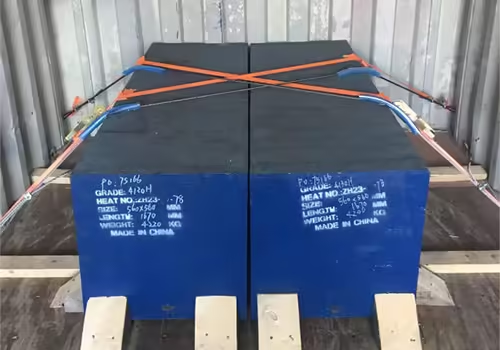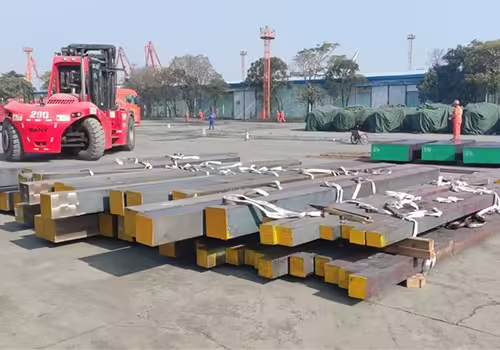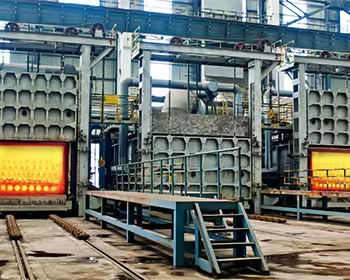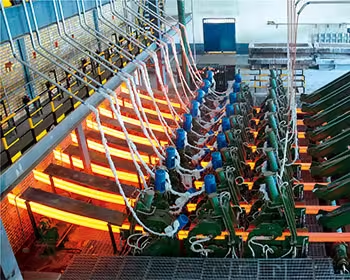
Beware!Hot Rolled 1020 Steel Properties You Shouldn’t Ignore
Table of Contents
Introduction


Hot rolled 1020 steel properties make this material a widely used choice across multiple industries, thanks to its excellent balance of strength, ductility, and machinability. As a low-carbon steel, it is particularly favored for applications where moderate strength and ease of fabrication are required. Industries such as construction, automotive manufacturing, and general engineering frequently rely on this material for producing structural components, machinery parts, and automotive frames. Its ability to undergo various forming and welding processes without significant loss of quality further enhances its appeal.
Despite its many benefits, hot rolled 1020 steel is not without its limitations. While it offers sufficient strength for a wide range of applications, it lacks the hardness and wear resistance of higher-carbon steels. Additionally, the hot rolling process results in a rough surface finish, which may require additional processing in some applications. Understanding both the strengths and drawbacks of this material is crucial for manufacturers and engineers looking to optimize performance and cost-effectiveness in their projects.
In this article, we will take an in-depth look at hot rolled 1020 steel properties, examining its mechanical and chemical characteristics, advantages, and potential drawbacks. We will also discuss its suitability for various applications, providing a comprehensive guide to help industries make well-informed decisions when selecting this material. Whether you are involved in metal fabrication, construction, or machinery manufacturing, having a clear understanding of hot rolled 1020 steel properties will help you determine whether this steel grade aligns with your specific needs.
Understanding Hot Rolled 1020 Steel Properties
Hot rolled 1020 steel properties are primarily defined by its low carbon content, typically ranging between 0.18% and 0.23%. This chemical composition makes it an excellent choice for applications that require a balance between strength, flexibility, and ease of fabrication. Unlike high-carbon steels that can become brittle or difficult to shape, 1020 steel remains highly workable, making it a preferred material in numerous industries, including construction, automotive, and manufacturing.
One of the major advantages of hot rolled 1020 steel is its ability to undergo various forming processes without compromising its mechanical integrity. Its relatively low hardness allows for easier machining and welding, reducing production costs and improving efficiency. However, while it offers good mechanical properties, it may not be suitable for applications requiring extreme strength or wear resistance.
Key Mechanical Properties of Hot Rolled 1020 Steel
To better understand the performance of this steel, let’s take a closer look at some of its fundamental mechanical characteristics:
- Tensile strength typically ranges from 380 to 550 MPa, making it strong enough for structural applications while maintaining flexibility. This moderate strength ensures that the material can handle standard loads without excessive deformation.
- Yield strength is generally around 205 MPa, indicating the stress level at which the steel begins to deform permanently. This relatively low yield strength allows the material to bend and absorb impact without breaking, making it useful in applications requiring ductility.
- Elongation is approximately 25%, meaning the steel can stretch significantly before reaching its breaking point. This property is crucial for applications that require the material to undergo stress without immediate failure.
- Hardness usually falls between 111 and 149 HB (Brinell Hardness), providing a balance between durability and machinability. While it is not as hard as high-carbon steels, it still offers adequate wear resistance for many common applications.
- Machinability is excellent, making it an ideal material for precision parts. It can be easily cut, drilled, and shaped into complex components without excessive tool wear.
While these properties make hot rolled 1020 steel a versatile choice, it is important to note that it lacks the higher hardness and wear resistance of higher carbon steels.
Advantages of Hot Rolled 1020 Steel Properties


The advantages of hot rolled 1020 steel properties make it a widely utilized material across various industries. Its unique combination of mechanical and chemical properties offers multiple benefits, making it a cost-effective and practical choice for manufacturers, engineers, and construction professionals. Below are some of the key advantages of using this steel in different applications:
1. Cost-Effective Production
One of the most significant benefits of hot rolled 1020 steel is its affordability. Due to its low carbon content and the efficiency of the hot rolling process, this steel is generally more economical compared to high-carbon steels or specialty alloys. The manufacturing process allows for large-scale production, keeping material costs low while maintaining consistent quality. This cost-effectiveness makes it an attractive option for industries that require high volumes of steel, such as automotive manufacturing, construction, and general engineering.
Additionally, since hot rolled 1020 steel does not require extensive heat treatment or additional processing after production, it helps businesses save on manufacturing and fabrication costs. The reduced need for secondary processing translates to faster turnaround times, making it ideal for time-sensitive projects.
2. Good Weldability
Hot rolled 1020 steel properties include excellent weldability, making it easy to join multiple pieces together without requiring specialized welding techniques. Unlike high-carbon steels, which may require preheating or post-weld heat treatments to prevent cracking, this low-carbon steel allows for smooth and reliable welding.
This characteristic is especially beneficial in industries like construction and automotive manufacturing, where strong and durable welds are essential for structural integrity. Whether using traditional arc welding, MIG welding, or TIG welding, hot rolled 1020 steel provides consistent and high-quality results with minimal risk of weld defects.
3. High Ductility
Another key advantage of hot rolled 1020 steel is its high ductility. The material can be easily bent, stretched, and formed into various shapes without breaking, making it an ideal choice for applications that require extensive forming and molding.
Ductility is a crucial property in industries such as metal fabrication and machine manufacturing, where components need to be shaped into intricate designs without compromising strength. The ability of 1020 steel to undergo deformation without failure makes it suitable for producing parts like brackets, panels, and tubing that must endure stress and movement.
Furthermore, its high formability ensures that manufacturers can achieve complex geometries without the need for expensive machining or additional processing steps. This enhances efficiency and minimizes material waste during production.
4. Decent Strength for General Applications
While not as strong as higher-carbon steels, hot rolled 1020 steel properties provide sufficient tensile and yield strength for many standard applications, including machinery frames and brackets.
5. Readily Available
Since it is commonly used in industrial applications, it is easy to source, reducing lead times for production and repairs.
Potential Drawbacks of Hot Rolled 1020 Steel Properties

While this material has multiple benefits, it also has some drawbacks that users should consider:
1. Lower Hardness Compared to High-Carbon Steels
The relatively low carbon content means that it lacks high hardness, making it less suitable for applications requiring extreme wear resistance.
2. Surface Finish Issues
Due to the hot rolling process, this steel may have surface imperfections and scale, which may require additional machining or finishing before use.
3. Limited Corrosion Resistance
Hot rolled 1020 steel does not have high corrosion resistance and often requires additional coatings or treatments to prevent rust in harsh environments.
4. Less Strength Than Alloy Steels
While it is sufficient for many general applications, it does not have the high strength or durability needed for heavy-duty structural components.
Comparison of Hot Rolled 1020 Steel Properties with Other Steels
To better understand its capabilities, below is a comparison of hot rolled 1020 steel properties with other common steel grades:
| Property | Hot Rolled 1020 Steel | Hot Rolled 1045 Steel | Hot Rolled A36 Steel |
|---|---|---|---|
| Carbon Content (%) | 0.18 – 0.23 | 0.43 – 0.50 | 0.25 – 0.30 |
| Tensile Strength (MPa) | 380 – 550 | 570 – 700 | 400 – 550 |
| Yield Strength (MPa) | 205 | 310 | 250 |
| Hardness (HB) | 111 – 149 | 170 – 210 | 120 – 160 |
| Weldability | Excellent | Moderate | Good |
| Machinability | High | Moderate | Moderate |
From the table, it is evident that hot rolled 1020 steel properties make it an ideal choice for applications that require easy machining and forming, while steels like 1045 offer higher strength but reduced weldability.
Conclusion
Hot rolled 1020 steel properties offer a combination of affordability, ductility, and moderate strength, making it a preferred choice for various industries. However, users must consider its limitations, such as lower hardness and potential surface imperfections. By understanding its characteristics, businesses can make informed decisions on whether this material is suitable for their specific needs.
For those requiring a balance of strength, weldability, and cost-effectiveness, this steel remains a solid choice. However, for applications demanding higher wear resistance or corrosion protection, additional treatments or alternative materials may be necessary.
FAQ
\What are the key hot rolled 1020 steel properties?
This steel offers good machinability, moderate tensile strength, high ductility, and excellent weldability, making it ideal for structural and industrial applications.
Is hot rolled 1020 steel resistant to corrosion?
No, it has limited corrosion resistance and may require coatings or protective treatments to prevent rusting in humid or wet environments.
How does hot rolled 1020 steel compare to 1045 steel?
Hot rolled 1020 steel has lower carbon content, making it more ductile and easier to weld, while 1045 steel offers higher strength and hardness.
Can hot rolled 1020 steel be hardened?
It has limited hardening capabilities due to its low carbon content. However, it can be carburized or heat-treated to improve surface hardness.
What are the common applications of hot rolled 1020 steel?
It is commonly used in structural supports, machinery parts, automotive components, and general fabrication projects.






